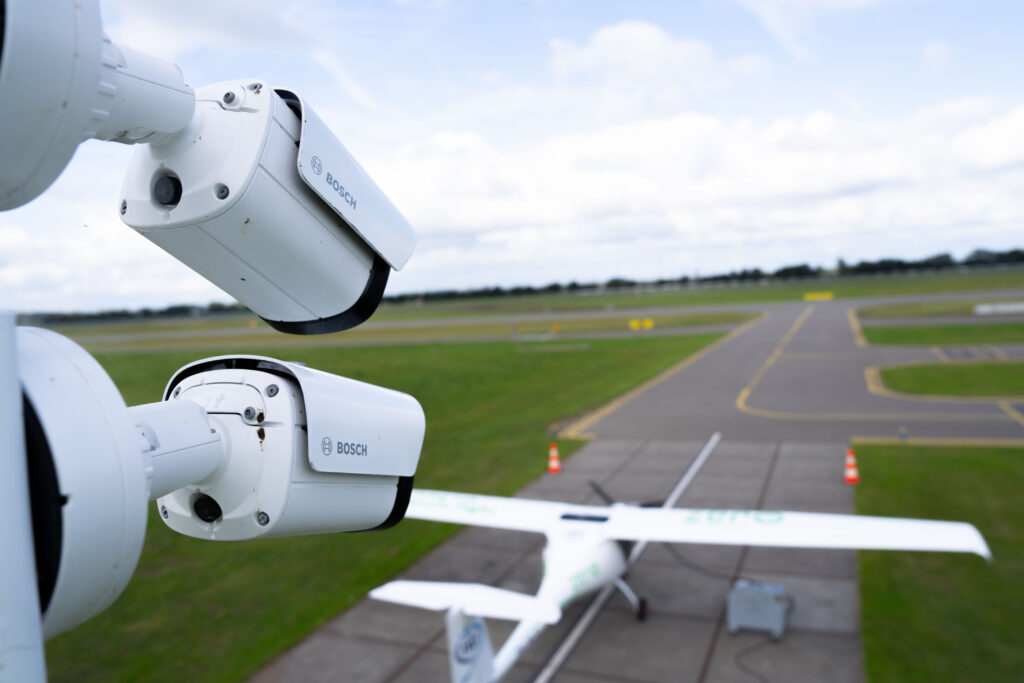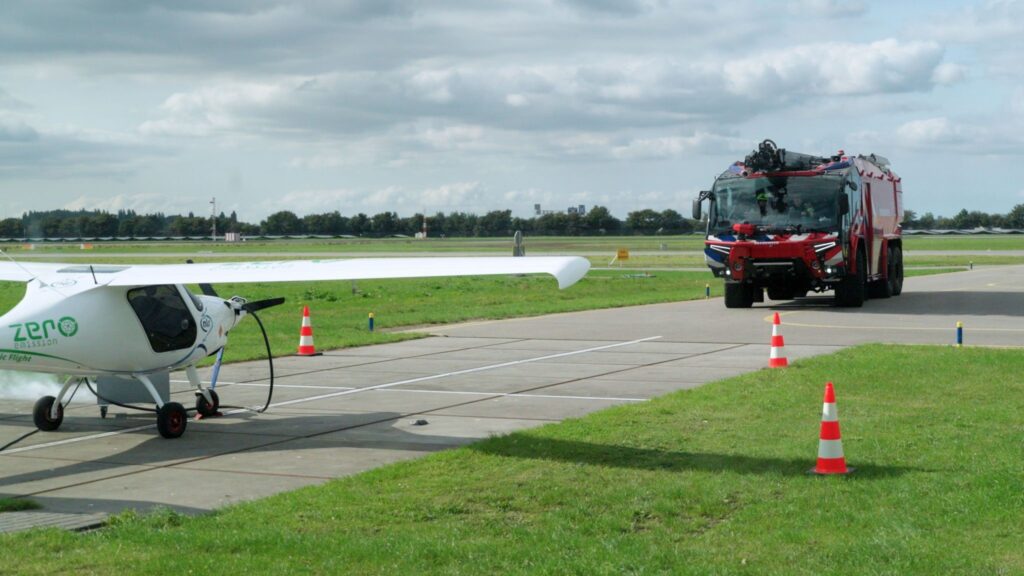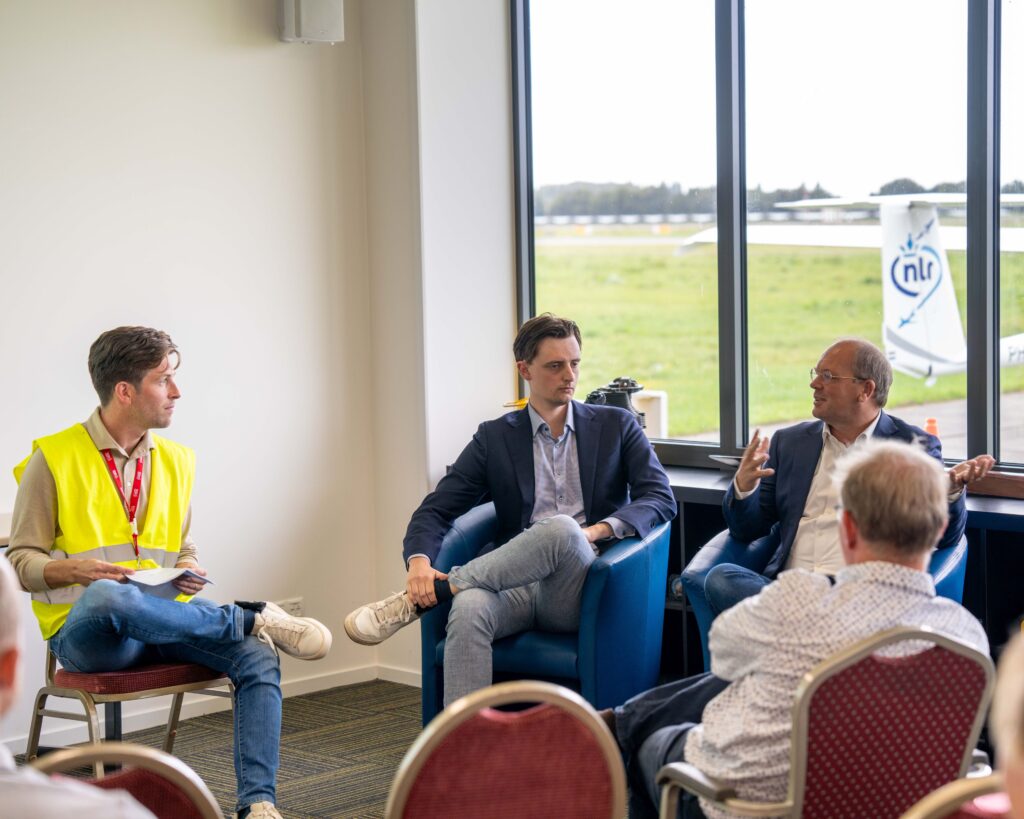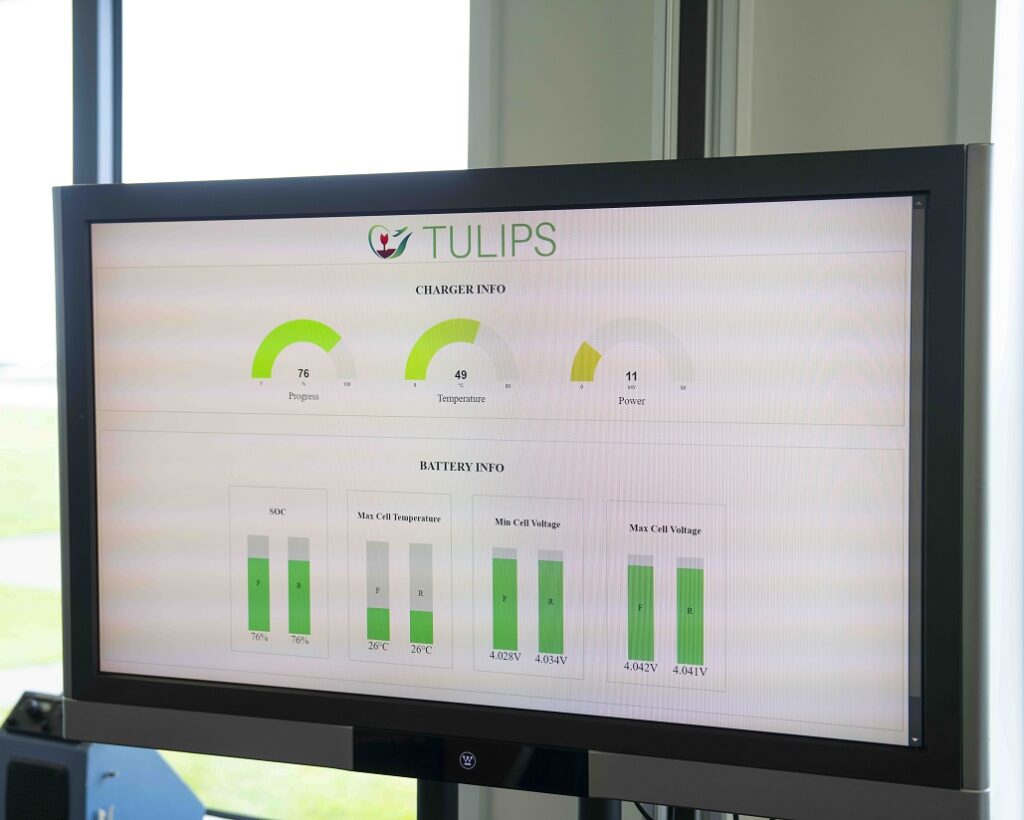September 2024
Charging electric cars is commonplace nowadays, but in aviation it is still far from obvious. Charging an electric aircraft without physical supervision raises all kinds of questions. To do this safely, technology can help. TULIPS-partners Rotterdam The Hague Airport, Pipistrel and the Netherlands Aerospace Centre (NLR) demonstrated their smart solution for unattended charging during a special Demo Day on 17 September.
An advanced camera system
TULIPS has developed a system that offers a solution: an advanced camera system that allows safe monitoring of charging using smart software, data exchange and camera images. This system was demonstrated on 17 September with the Pipistrel Velis Electro, an electric two-seater aircraft, from the Netherlands Aerospace Centre. The demonstration took place at the Rotterdamsche AeroClub at Rotterdam The Hague Airport.
The demonstration
During the event, the first results of monitoring the unattended charging of an electric aircraft were presented to experts. Remote battery status was successfully monitored and remote charging was stopped. In addition, smart cameras were able to detect the presence of persons near the aircraft and smoke development. The airport fire brigade responded quickly and as planned when smoke was detected. The various technological solutions presented on the day aim to make remote monitoring of electric aircraft charging a reality over time.


Testing ground for innovation
Regional airports play an important role in the transition to electric aviation. As a testing ground for innovation, Rotterdam The Hague Airport facilitates the airport area as a demonstration and test site for new sustainable ideas and solutions. The small scale of the airport and cooperation with partners allow innovations to be tested quickly.
General aviation
Electric flying is one of the options for fossil-free general aviation. We expect 100% of flights by flight schools at Rotterdam The Hague airport to be electric by 2035. Preparations are therefore underway, such as creating multiple charging points, ensuring the safety of the infrastructure and retraining the airport fire brigade when it comes to fire safety in electric aircraft and related charging infrastructures around electric aircraft.


Read about the preparations for a hydrogen drone flight at RTHA, another TULIPS demo.
